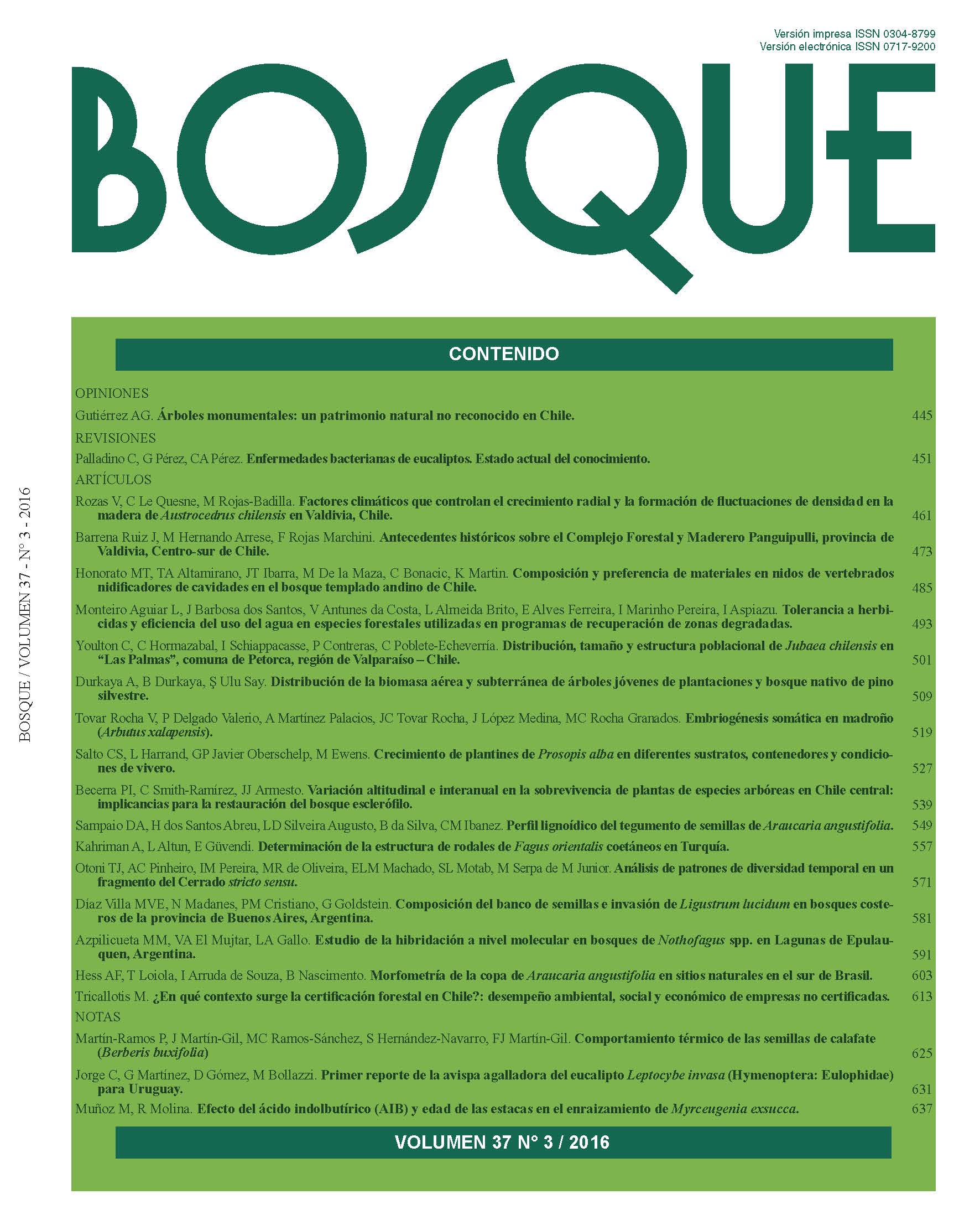Seed bank composition and Ligustrum lucidum invasion in coastal forests in Buenos Aires, Argentina
Main Article Content
Abstract
Seed banks are key components of terrestrial ecosystems as they determine the future development of its vascular plants. In disturbed environments, seed banks can either favor regeneration of native species, or enhance colonization and expansion of exotic species. In Buenos Aires Province (Argentina), Celtis tala forests are the main wooded community. They have experienced strong anthropogenic disturbances that made them vulnerable to invasion from the exotic tree Ligustrum lucidum. The objective of this work was to study the seed bank composition in Celtis tala forests in "El Destino" Reserve (Magdalena, Buenos Aires) and its relation with the standing vegetation in areas with distinct degrees of invasion. Five plots were stablished in two wooded cordons, covering four types of environments. In each plot, a soil sample was taken and standing vegetation was studied. Seed bank composition was analyzed qualitatively and quantitatively during four months in a Ciudad Universitaria's greenhouse. Invaded environments were characterized by having less diversity, richness and evenness than those presented by non-invaded environments. Non-invaded environment's seed banks exhibited a larger proportion of herbaceous species while in invaded seed banks, Ligusrtrum lucidum dominated. This result shows that invasion has exceeded the threshold of reversibility, consolidating as neo-ecosystems dominated by L. lucidum.

